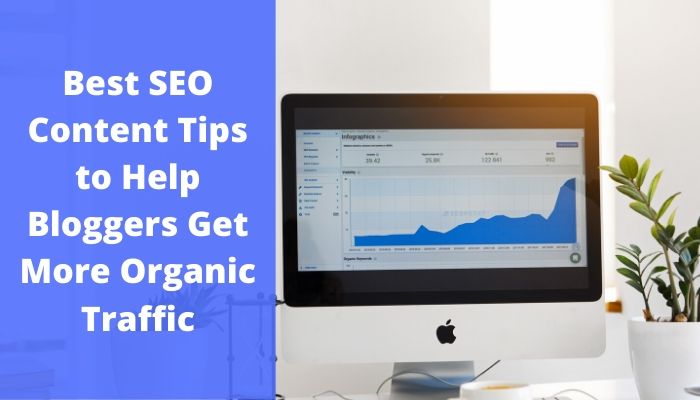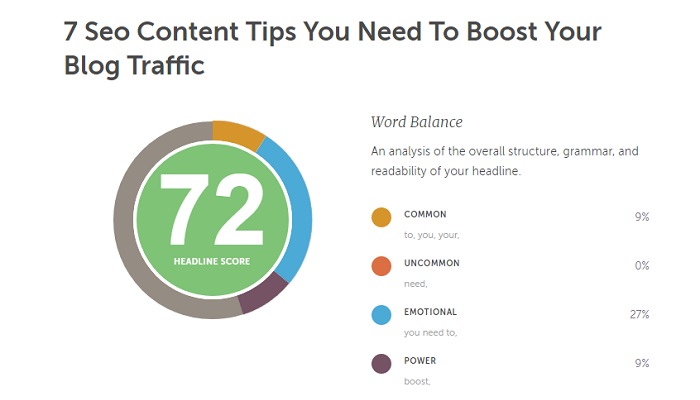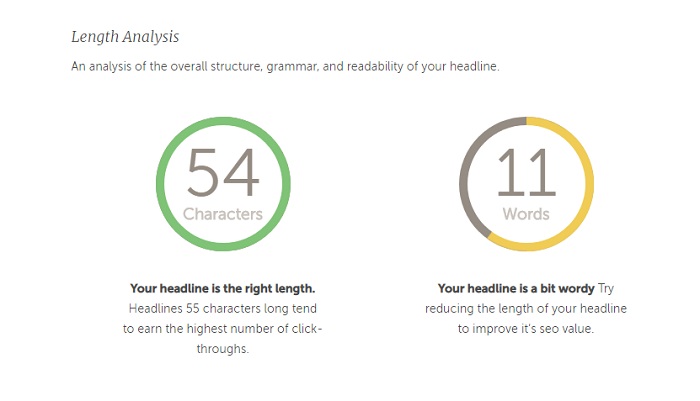Best SEO Content Tips to Help Bloggers Get More Organic Traffic

SEO content tips – This is something you would most likely use interchangeably with SEO strategies.
Well, you are not the only one.
And let me assure you that they are NOT the same!
You are probably wondering why you need to know about SEO content tactics separately when you, along with all the bloggers under the sun, are well aware of SEO strategies.
That IS the reason!
Each blogger in the much-coveted $50+K a year club put an astounding amount of emphasis on SEO strategies. In fact, nearly 1 out of every 3 bloggers reports that acquiring organic traffic to their blog sites have gotten increasingly difficult!
Since over 6 out of every 10 marketers direct their time, money and effort on SEO improvement, Google was forced to update its algorithm. As a result, blog posts (and all websites under the sun) now have to meet additional requirements in order to rank higher in the SERP.
As you have already guessed, these ADDITIONAL SEO requirements are targeted to your blog post content. So if you are serious about optimising your blog post content and pumping up the organic traffic volume of your blog, do read on!
1. Updating older content
Updating older content is something that would seem pretty common to you, right? Well, you would then be surprised to know that less than 2 out of every 5 bloggers update their content!
Updating your content would have the following benefits:
- Convinces search engine that your content has more to offer and is of higher relevance to the corresponding audience.
- That, in turn, pushes it up the SERP directing greater volume of organic traffic to it.
Your audience would be resharing it with others via social media. That would give you some extra referral traffic along with the organic one! You’ll gain all of this for a fraction of the effort it took to produce that content in the first place!
Content updating is not limited to the content body itself. It also includes –
2. Crafting optimum headlines
Headlines happen to be the very first thing both search engine crawlers and your audience would read. Since 1 out of every 2 search queries (Google processes about 63,000 search requests EVERY SECOND) used by people to search stuff is four words or longer, it shows people are very specific about what they are looking for.
For this reason, search engine crawlers would try to find a match between the 4-5 word long search query and your blog post title. The greater this match is, the higher is the chance of your article to secure a position at the top of the SERP for that specific keyword.
Your blog visitors behave in a similar fashion.
If your article headline can trigger emotions such as curiosity, fear or anxiety in people, they would be intrigued to explore. However, if it fails to do that, well, your post would end up in the recently closed tabs!
Before I mention the necessary tool you can use to play with your blog article headlines, allow me to mention some relevant stats:
- If your headline is made up of 6-8 words, the click-through rate of your blog is most likely to gain a boost of over 20%.
- On average, 8 out of 10 visitors that land on your blog post would read the headline.
Now that you are aware of the data emphasizing on the importance of article headlines, let’s talk about the experimentation process.
There are several tools available for this. The one I use is CoSchedule.
Through this tool, I can analyse my post article headlines in terms of length, reader behaviour and sentiment and appearance in SERP.
For this article, I have come up with 3 headlines which I have run through this tool.

The headline with the highest score is broken down in the following manner.

Then comes the report on the word and character count assessment. My title seems to have an optimum number of characters but a little too many words.

What follows length analysis is sentiment and keyword analysis. As you can see, it also includes a helpful tip.

Last, but not the least, is the Google SERP appearance. It shows how much of my article headline would be visible. Since Google has a cutoff limit of 60 characters, not all headlines may enjoy full visibility.

Because of such thorough analysis and focus on tiniest of details, all (almost) guesswork gets thrown out the window. For me personally, this is a huge help in speaking directly to my audience and engage them effectively!
When you are done optimising headline, the next thing to focus on is something simple yet profoundly significant. That is –
3. Making sure the first sentence and paragraph headline are in sync
Along with headlines, search engine crawlers would also check out the first few lines of every paragraph in your article.
If the headlines of every paragraph are in sync with the initial sentences, search engines get a better idea about the content of your blog post.
How does that help you get more organic traffic? Well, the better Google (or any other search engine) understand the content topic, the better it can match it against search queries and show it to interested people.
This sync also helps your article readers get an idea about the topic of discussion. That’s the reason they read articles in an “F” pattern.

As you can see in the screenshot above, the first sentence of every paragraph is red, indicating it received maximum visitor attention. The sync between the first sentence and the headline would encourage people to read further. So along with enhanced organic traffic, your blog posts would provide greater value to your readers.
For enhanced organic traffic, this sync is not enough.
Your blog posts should also contain –
4. Stat info from high-authority source along with screen-shots where appropriate
Statistical info that links to high-authority source and are relevantly placed (yes Google can figure that out) would make your blog post appear more usable to search engine crawlers.
As a result, your article would have a better chance of ranking in the SERP for your target keyword which in turn directs more people to your and boost its click-through rate.
Though screen-shots cannot and shouldn’t be used as frequently as stat info, they help people get an exact idea about how to perform a task or familiarise them with a new software/website environment.
Thus if you use screen-shots in your articles, people would tend to spend more time in your article. That amplifies the page session (time duration of users staying in your blog) of your blog, which in turn gives your ranking power a significant boost!
Reliable stat-info and screenshots are only part of the story!
5. Highly usable infographics
I would emphasize on “highly usable” Infographics, when based on extensive audience research, can make a great reference for other bloggers and businesses in your niche.
Usage of your infographic as a reference means a lot of backlinks for your blogs.
As previously mentioned, backlinks give search engines the idea that your blog is a leader (or wields high authority) for your target keywords.
Such authority is a surefire way to amp up the volume of people that end up on your blog organically!
Getting organic traffic
Your blog’s organic traffic may depend on many other factors apart from the ones mentioned above. What you would need is a balanced approach. You should explore various tactics and figure out which one serves your blog best in terms of organic traffic enhancement.
So which tip do you think you can implement right away in your blog posts?
Author Bio:
Liakat Hossain works as a content marketing and SEO specialist in WebAlive, a prominent SEO agency in Melbourne. He loves digging up info on diverse ways of targeted digital advertising as well as history and geo-politics! In his break time, he is either enjoying the lake view through his window or playing table tennis.

